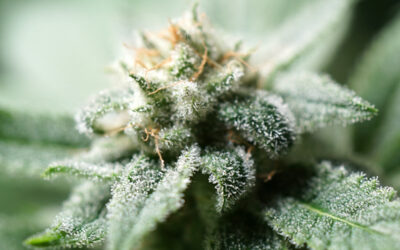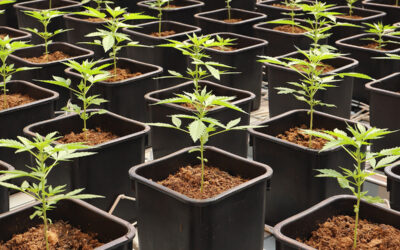Auto-flowering vs Photoperiod Strains
Auto-flowering vs Photoperiod
Growing cannabis has evolved into an art and science, with various methods and approaches developed to maximise yield, potency, and overall quality. For both novice and experienced growers, one of the first and most critical decisions to make is choosing between auto-flowering and photoperiod strains. Both types of cannabis plants come with their distinct advantages and disadvantages, making them suitable for different growing environments, skill levels, and objectives. In this post, we’ll dive deep into the pros and cons of auto-flowering and photoperiod strains, helping you make an informed decision for your next cultivation project.
Understanding the Difference
Before getting into the pros and cons, it’s essential to understand the key differences between these two types of cannabis strains.
Photoperiod Strains
These are traditional cannabis strains that depend on light cycles to transition between their growth stages (vegetative to flowering). In nature, photoperiod strains flower in response to the changing light hours as the seasons shift. In indoor environments, growers manipulate light cycles—usually 18 hours of light and 6 hours of darkness for the vegetative stage, and 12 hours of light and 12 hours of darkness to trigger flowering.
Auto-flowering Strains
Auto-flowering strains do not depend on light cycles to flower. Instead, they start flowering automatically after a certain period (usually about 2–4 weeks after germination), thanks to their genetics, which are influenced by Cannabis ruderalis, a hardy variety of cannabis native to harsh climates with short summers.
Now, let’s break down the pros and cons of each type.
Autoflowering Strains
Pros of Autoflowering Strains
Quick Turnaround Time
One of the most significant advantages of auto-flowering strains is their speed. Auto-flowers tend to complete their life cycle in 8 to 10 weeks from seed to harvest, which is ideal for growers seeking quick results. This fast growth allows for multiple harvests within a single growing season.
Compact Size
Auto-flowers are typically smaller than photoperiod plants, usually growing between 30 to 100 cm in height. This compact size makes them ideal for indoor growers with limited space, balconies, or stealth gardens. Additionally, their smaller stature makes them easier to manage for novice growers.
Resilient and Hardy
Thanks to their ruderalis genetics, auto flowers are incredibly hardy and resistant to pests, mould, and environmental stress. This makes them particularly well-suited to outdoor cultivation in unpredictable climates, where other strains might struggle to thrive.
Simplicity of Light Schedule
Autoflowering strains don’t require manipulation of the light cycle, which simplifies indoor growing. They can flower under almost any light condition, from 18-24 hours of light per day. This makes them more forgiving for beginners and those who want a low-maintenance grow.
Ideal for Beginners
Due to their hardiness and ease of growing, auto flowers are often recommended for novice growers. They don’t need a precise light schedule and are more tolerant of minor mistakes in watering, nutrients, and climate.
Cons of Auto-flowering Strains
Lower Yields
The trade-off for auto-flowers’ fast growth and compact size is generally lower yields compared to photoperiod plants. While they might be easier to grow, they typically produce smaller buds, and the total harvest can be significantly less per plant.
Limited Control Over Growth Cycle
Auto-flowers’ life cycle is dictated by time, not light. Once they start flowering, there’s no way to extend the vegetative phase to allow for more growth. This lack of control can be frustrating for growers who want to maximise the size of their plants or who encounter issues early on.
Lower Potency
While auto-flowers have improved significantly in terms of potency over the years, many still argue that they don’t quite match up to photoperiod strains in terms of THC content and overall quality. However, recent developments have closed the gap between the two, with some auto-flowering strains now boasting high THC levels.
Photoperiod Strains
Pros of Photoperiod Strains
Higher Yields
Photoperiod plants have the potential to grow larger and, consequently, produce much higher yields compared to auto-flowers. With the ability to control the length of the vegetative phase, growers can ensure their plants reach a substantial size before inducing flowering, which translates into more bud production.
Greater Potency and Variety
Photoperiod strains are often considered the gold standard when it comes to potency, flavour, and overall quality. With a broader selection of strains, including many legendary and highly sought-after varieties, photoperiod plants generally offer more diversity in terms of THC content, CBD content, terpene profiles, and effects.
Control Over the Growth Cycle
One of the primary benefits of photoperiod strains is the control they offer over the growing process. Growers can keep plants in the vegetative stage for as long as they want, allowing for more training and higher yields. This flexibility is ideal for those who want to experiment with plant training techniques such as topping, LST (low-stress training), or SCROG (screen of green).
Long-Term Cloning and Breeding
Unlike auto flowers, which cannot be cloned effectively due to their predetermined life cycle, photoperiod strains can be cloned, allowing growers to preserve and propagate their favourite plants. Photoperiod plants are also ideal for breeding projects, where control over the growth cycle is crucial.
Cons of Photoperiod Strains
Longer Growing Time
Photoperiod plants take longer to grow and flower compared to auto flowers. It can take anywhere from 3 to 5 months (or more) from seed to harvest, making them less ideal for those seeking a quick turnaround.
Sensitive to Light Cycles
One of the biggest challenges with photoperiod strains is their dependency on specific light cycles to flower. For indoor growers, this means more careful management of lighting schedules, and even small interruptions in the dark cycle can stress the plants or cause them to revert back to vegetative growth.
Larger Size
While larger plants mean bigger yields, it also means more space is required to grow them. Photoperiod strains can reach impressive heights, which might be problematic for indoor growers with limited vertical space.
More Demanding for Novice Growers
Photoperiod strains require more attention to detail and precision, especially when it comes to light management, nutrients, and climate control. Novice growers might find them more challenging and less forgiving of mistakes than auto-flowering strains.
Auto-flowering vs Photoperiod Conclusion
Both auto-flowering and photoperiod strains offer unique advantages and disadvantages, and the best choice depends on your personal goals, growing environment, and level of experience. Autoflowers are perfect for growers looking for fast, easy-to-manage plants, while photoperiod strains offer more control, higher yields, and greater potency. Whether you’re a beginner or an experienced cultivator, understanding the pros and cons of each strain type will help you make the most out of your cannabis-growing journey.
Common Growing Mistakes
Common Cannabis Growing Mistakes Cannabis cultivation is now more accessible than ever, with many...
Choosing The Right Medium
Choosing The Right Medium For Growing Cannabis Soil vs. Hydroponics vs. Coco Coir When it comes to...
Germinating Cannabis Seeds
Germinating Cannabis Seeds Three Proven Methods Germinating cannabis seeds is the first critical...
Growing Medical Cannabis
Growing Medical Cannabis As cannabis continues to gain legal status for medicinal purposes...
Cannabis Concentrates
Cannabis Concentrates Cannabis concentrates are quickly becoming one of the most popular methods...
Growing Cannabis For the First Time
How to Grow Cannabis for the First Time A Quick Beginner's Guide Growing cannabis for the first...
Scrog Growing
Scrog Growing: A Beginners Guide What is Scrog (Screen of Green)? Scrog, or "Screen of Green," is...
Indica Versus Sativa
Indica vs. Sativa Understanding the Key Differences When it comes to cannabis, understanding the...
Drying And Curing Cannabis
Drying And Curing CannabisAfter months of hard work, your plants are ready to harvest, marking the...
When To Harvest Your Cannabis Plants
When to Harvest Your Cannabis Plants A Comprehensive Guide for New Growers One of the most...
Growing Cannabis Indoors vs Outdoors
Growing Cannabis Indoors vs. Growing Cannabis Outdoors Which is Best for You? As the popularity of...
What Are Auto-flowering Cannabis Seeds?
What Are Auto-Flowering Cannabis Seeds? Auto-flowering cannabis seeds are a unique type of...
What Are Feminized Cannabis Seeds?
What are Feminized Cannabis Seeds? Feminized seeds are a cannabis seed that produces female plants...
Dr Raphael Mechoulam And His Work
Dr. Raphael Mechoulam and His Work Prof. Dr. Raphael Mechoulam, often referred to as the "father...
The History Of Cannabis
The History of Cannabis A Journey Through Time Cannabis, often shrouded in controversy, has a rich...



